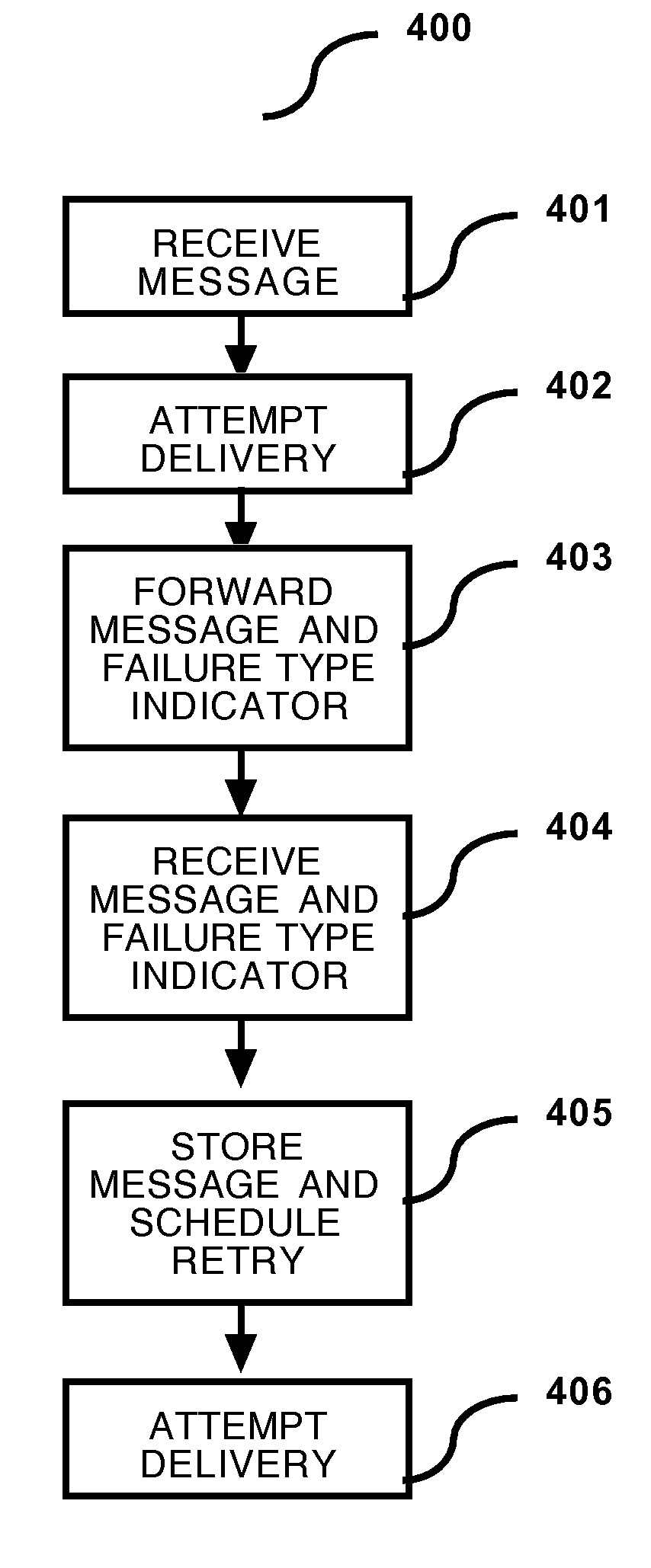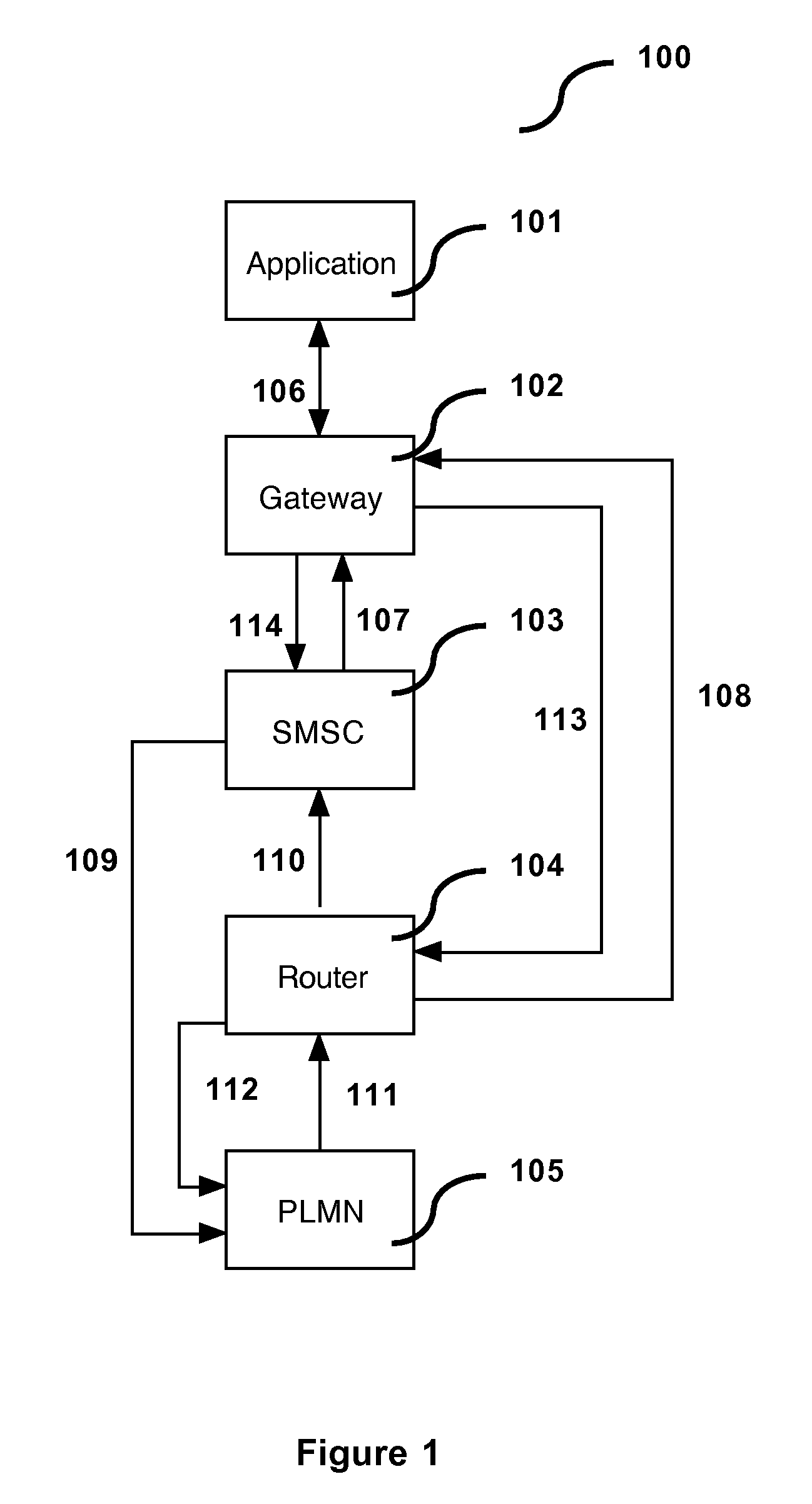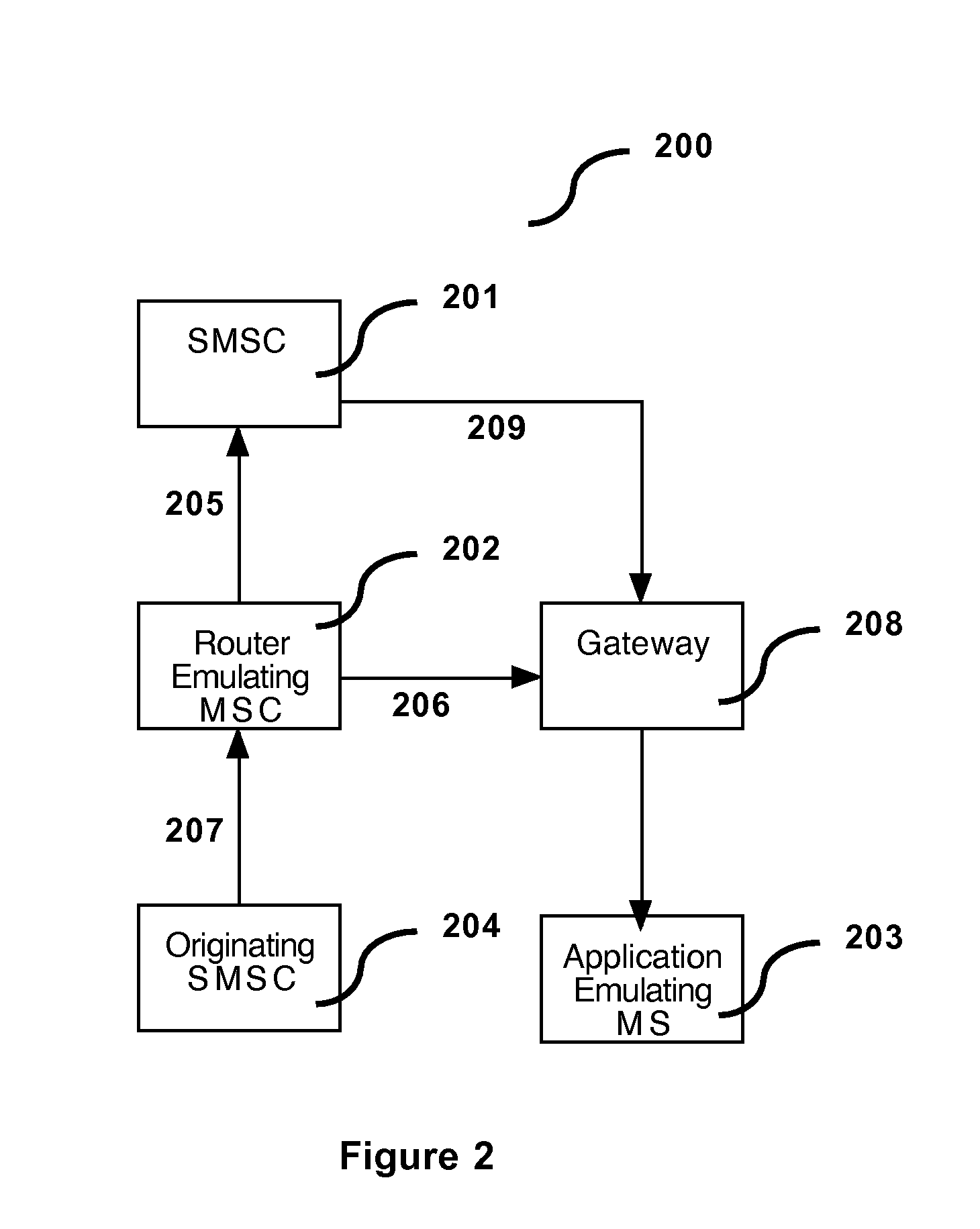Method for processing a message
- Summary
- Abstract
- Description
- Claims
- Application Information
AI Technical Summary
Benefits of technology
Problems solved by technology
Method used
Image
Examples
Embodiment Construction
[0061]FIG. 3 is a schematic representation of an exemplary messaging architecture 300 and message flows therein in accordance with the present method for processing a message. The messaging architecture 300 is described in the context of a SMS but is equally applicable to a MMS and other similar messaging services.
[0062] The messaging architecture 300 is comprised of one or more gateways 302, one or more message centers (a.k.a. SMSC) 303 and one or more routers 304. The one or more gateways 302 allow applications 301 hosted in a fixed communication network (herein after a fixed network) to gain access to the SMSC 303 and routers 304. The one or more SMSC 303 store messages (SM & SR) and forward them to their intended recipients via the gateways 302 and routers 304. The one or more routers 304 collect messages 311 from a mobile communication network (herein after a mobile network) (a.k.a. PLMN) 305 and either deliver them to other mobiles (i.e. mobile terminals), forward them 310 to...
PUM
 Login to View More
Login to View More Abstract
Description
Claims
Application Information
 Login to View More
Login to View More - R&D
- Intellectual Property
- Life Sciences
- Materials
- Tech Scout
- Unparalleled Data Quality
- Higher Quality Content
- 60% Fewer Hallucinations
Browse by: Latest US Patents, China's latest patents, Technical Efficacy Thesaurus, Application Domain, Technology Topic, Popular Technical Reports.
© 2025 PatSnap. All rights reserved.Legal|Privacy policy|Modern Slavery Act Transparency Statement|Sitemap|About US| Contact US: help@patsnap.com



